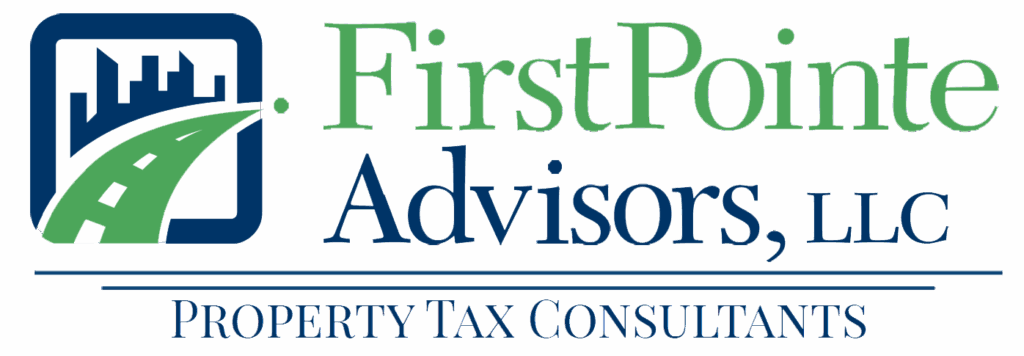News
CRE Trends in Valuation for 2025

The Texas commercial real estate market continues to be a dynamic force, drawing investors and developers from across the country. With its business-friendly environment, growing population, and diverse economic drivers, Texas remains a hotspot for commercial real estate activity. However, as property valuations continue to rise unevenly across asset classes, understanding key trends in 2025 is critical for owners looking to ensure fair and accurate assessments.
1. Industrial and Multi-Family Boom: Leading the Charge
Texas’s industrial and multi-family sectors have been on fire, driven by economic fundamentals and demographic shifts:
Industrial:
The demand for distribution centers, warehouses, and logistics hubs remains insatiable, fueled by e-commerce growth and supply chain realignment.
Major markets like Dallas-Fort Worth, Houston, and Austin lead the nation in new industrial development. For example, DFW added over 70 million square feet of industrial space from 2023-2024 alone, yet vacancy rates remain relatively low.
While market strength has been a boon for investors, appraisal districts often assign blanket valuation increases that may not reflect property-specific factors like location, lease rates, or condition.
Multi-Family:
Population growth and housing demand have supported steady rent increases, especially in cities like Austin, Houston, and San Antonio.
However, new construction surges in some areas have introduced concerns of over-saturation, slowing rent growth and pressuring NOI (Net Operating Income).
Properties struggling with occupancy or rising operating expenses may be overvalued if not carefully reviewed.
What it Means for Owners: Despite strong macro trends, valuation increases must be closely examined. Owners of industrial and multi-family assets should ensure their assessments align with property-specific performance—not broad market assumptions.
________________________________________
2. Office Sector Uncertainty: A Valuation Mismatch
The office sector remains one of the most volatile asset classes in Texas. Post-pandemic workplace shifts, remote work adoption, and corporate downsizing have left many office markets with persistently high vacancy rates:
- In major metros like Houston and Dallas, office vacancy rates have climbed above 20-25%, with older or outdated office spaces suffering the most.
- Class B and C properties are particularly vulnerable, as tenants increasingly demand modern, amenity-rich spaces in prime locations.
- Yet, many appraisal districts continue to assign valuations based on pre-pandemic income assumptions, ignoring current challenges like lease rollovers, declining rental rates, and significant tenant improvement costs.
What it Means for Owners: Office owners have a clear opportunity to appeal. If your property is underperforming or faces rising vacancies, the valuation should reflect these realities.
________________________________________
3. Retail Recovery: A Story of Winners and Losers
Retail’s recovery across Texas has been uneven, with some sectors thriving while others continue to face headwinds:
- Neighborhood Centers and Grocery-Anchored Retail: These have performed exceptionally well, supported by stable tenant demand and increasing foot traffic.
- Mall and Big Box Spaces: Older retail properties in less competitive locations face challenges. While foot traffic has returned, tenants are increasingly negotiating for lower rents, and vacancies persist in some markets.
Texas’s consumer base remains strong, but rising interest rates and economic uncertainty have also limited new investment in retail redevelopment projects.
What it Means for Owners: Retail owners should ensure valuations account for tenant-specific performance, local vacancy rates, and potential property challenges like deferred maintenance or lease rollovers.
________________________________________
The Opportunity: Why Understanding These Trends Matters
The evolving Texas commercial real estate landscape presents a mixed bag for owners. While some sectors are seeing historic growth, others face significant headwinds that appraisal districts don’t always account for. Across all asset classes, there are opportunities to reduce property tax liability by:
- Ensuring valuations accurately reflect current market realities (vacancy, income, expenses).
- Leveraging detailed property-specific analysis rather than relying on generic market comparisons.
- Identifying instances where rising valuations have outpaced actual property performance.
At FirstPointe Advisors, we specialize in navigating these complexities for Texas property owners. Our team combines deep market knowledge, advanced analytics, and a proven approach to property tax appeals, ensuring your property is assessed fairly and accurately.
________________________________________
Stay Ahead in 2025
Understanding these market trends isn’t just insightful—it’s essential for reducing property tax burdens. If you own industrial, multi-family, office, or retail assets in Texas, now is the time to review your property and have our team ready to act when notices are released.
Contact FirstPointe Advisors today for a complimentary property tax review and let us help you plan ahead for success.
James “Garrett” Cope
Senior Manager, Property Tax
FirstPointe Advisors, LLC
3201 Dallas Pkwy., Suite 200
Frisco, TX 75034
Main: 214.253.0056
info@first-pointe.com


